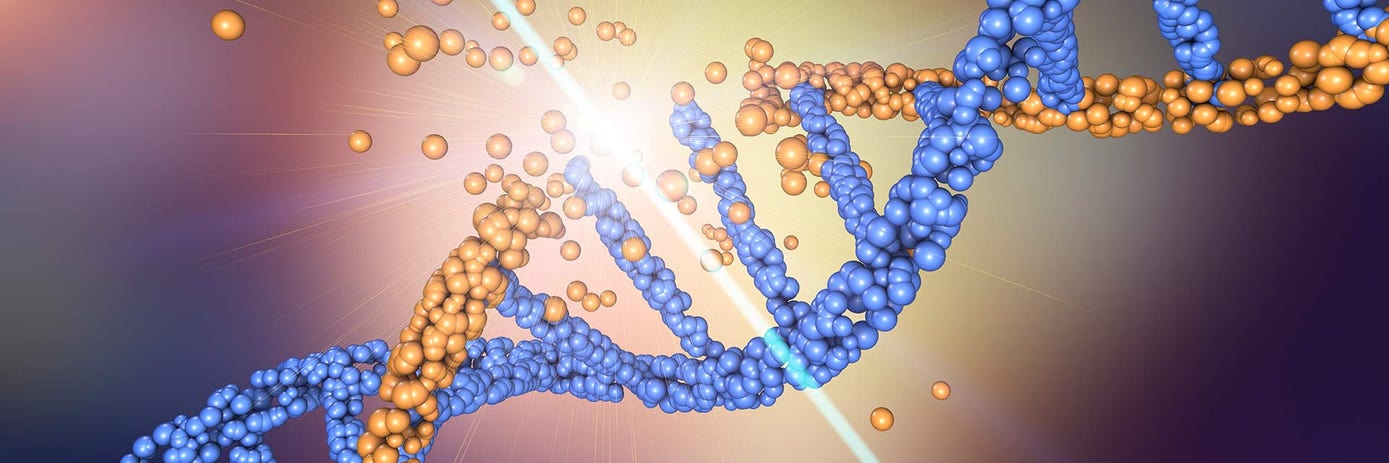CRISPR technology creates double-stranded breaks in targeted loci, creating an insertion or deletion (indel), ultimately resulting in a frameshift mutation. The subsequent disruption in transcription creates a gene knockout (KO) ideal for loss-of-function studies.
Experimental setups often require transfecting many cells at once, resulting in a heterogeneous pool of edited cells with varying indel populations. Single-cell isolation can be a long and unrewarding process, and working with pools after transfection may seem like a quick route to results. Many researchers, therefore, face the choice of getting quick results using their pool or continuing with single-cell selection in the hope of retrieving a highly characterized, stable cell model.
Here are our top 4 things to consider when deciding between clones and pools:
- Homozygous knockout efficiency
All alleles of the target gene must be edited to ensure that the gene is ablated. It is possible to create pools of CRISPR-edited cells where the cutting efficiency is high enough to impact protein expression. However, unless the pool population has 100% homozygous KO clones, there is the risk of sufficient protein expression from unedited or heterozygous cells, which can produce inconsistent results. Working with a highly characterized, homozygous clonal model helps to ensure that protein expression is completely ablated and results are reproducible from one experiment to the next. - Gene copy number
The number of alleles of the target gene will influence the chances of a successful outcome. This is an important consideration, as many commonly used cancer cell lines have three copies or more across the genome. If the cell line used is polyploidy for the target gene, the risk of protein expression increases. Working with a highly characterized clonal cell line helps to ensure that every gene allele has been functionally edited to produce a knockout – even when there are three or more copies of the gene. - Gene essentiality
Unedited or heterozygous clones may also mask gene essentiality, as full KO clones will be eliminated from the bulk culture. If you consistently retrieve 50% heterozygous editing in a diploid cell background, this suggests that the gene is essential. - Gene expression from alternative splicing
Another consideration is the chance of incomplete target ablation via exon skipping and nonsense-associated alternative splicing. If an indel is introduced in an exon that is not present in all isoforms of the protein, it may result in residual protein expression and partial phenotypic functionality. A highly characterized clonal cell line decreases the chance of this occurrence by selecting clones with edits in conserved exons that result in proteins with complete loss of function.
The extent to which these factors will interfere with your results depends on the target involved. For many targets, a quick look-see with a pool population provides enough direction to move a project on. However, for the peace of mind of more reproducible results, a clonal cell line would provide consistency as every individual cell harbors the same loss of function mutation.
After obtaining your clone, it is good practice to expand and bank your clonal line at a low passage rate so that you can return to the original material in the case of inconsistent results. Genetic drift or selection pressure through cell culture passaging may also create deviations in how a clonal cell line responds over time.
It is good practice to confirm your results in two clones to guard against potential problems caused by variability during single-cell clonal expansion. Often, more than one clone will be derived during the selection process, which would provide an opportunity for more certainty.
Confirm your research by outsource your cell line engineering.
If you’re looking for some expert help or additional resources, Revvity's cell line engineering services can provide a defined clonal cell model in as little as 10 weeks and knockout and knock-in models are delivered in as little as 10 days.

































